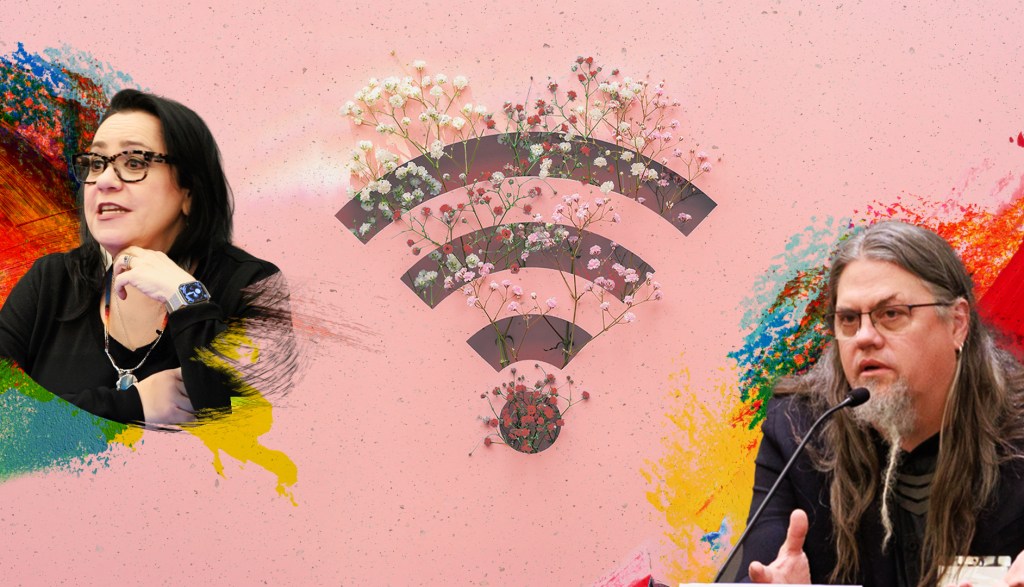
The digital landscape has become an indispensable platform for modern life, influencing everything from economic development and health care to education and cultural preservation. For Tribal Nations in the United States, engagement with this landscape is inextricably linked to the exercise of their inherent sovereignty.
Take reliable broadband internet, which has become a critical infrastructure—as vital to daily life as utilities like water and electricity. However, this essential service remains inaccessible to many Native American communities, perpetuating longstanding underinvestment in Tribal infrastructure.
According to the Government Accountability Office, as of 2020, 18% of residents on Tribal lands lacked access to broadband service—more than four times the rate in non-Tribal areas at 4%. These disparities are even more pronounced in certain regions: In Arizona’s Tribal communities, 60% of residents lack broadband connectivity, illustrating how geographic and systemic barriers compound to limit access.
This connectivity gap affects over 1.4 million Native Americans and represents more than a digital disparity—it makes full participation in economic, social, cultural, and civic engagement impossible.
Broadband Access on Tribal Lands
On Tribal lands,18%of residents lack broadband
That is more than4 xthe rate in non-tribal areas
Addressing these challenges requires recognizing Tribal digital sovereignty, an essential concept for Native American communities’ self-determination. It goes beyond connecting to the internet; it’s a holistic approach for governance over all digital assets, from physical network infrastructure to the full life cycle of data, from its collection and storage to its use and transmission. This approach empowers tribes to manage their own technological futures, ensuring that solutions are not imposed from the outside but are instead aligned with their unique priorities. This includes tribes designing their own digital codes and data protection protocols that respect their cultural values and legal frameworks. It means building and controlling their own network infrastructure to ensure reliable connectivity and digital equity for all community members. It also centers the ability to create and secure funding and resources necessary to support areas like education, health care, and economic development.
Canaries in the Coal Mine
When the COVID-19 pandemic struck, the consequences of a lack of digital sovereignty for Tribal nations became devastating: Landlines and radio proved insufficient for Tribal communities as they tried to access rapidly evolving information about the disease and connect to healthcare services. In a time when even a 1% increase in broadband access nationwide lowered Covid-19 mortality by about 19 deaths per 100,000, Tribal communities suffered deeply from being denied reliable internet connections.
“It’s not an exaggeration to say that we died. It’s not an exaggeration to say that we were the canaries in the coal mine,” said Dr. Traci L. Morris, director of the Center for Tribal Digital Sovereignty at Arizona State University, a Ford Foundation grantee and one of the nation’s foremost experts on Tribal digital access and equality. The Center is the first and only institute in the United States dedicated to assisting Tribal governments, leadership, and communities in navigating the complexities of digital justice and access.
Tribal communities were disproportionately affected by COVID-19, with infection rates four times higher and mortality rates twice as high as other populations. The lack of broadband access was a multiplier of these impacts.
For students in Tribal communities, the challenges of unreliable internet access also proved severe: As schools turned abruptly to online instruction, these young people found themselves at a severe disadvantage. “You cannot do Zoom easily on a phone. You cannot do homework on a phone. We had students doing papers on Facebook,” said Dr. Morris. Stories of students and families sitting in parking lots, desperately seeking connectivity, became a symbol of digital inequality’s human cost.
Tribal communities were disproportionately affected by COVID-19, with infection rates four times higher and mortality rates twice as high as other populations. The lack of broadband access was a multiplier of these impacts. As leaders in Tribal lands across the United States fight to close this digital gap for Tribal communities and ensure equal broadband access, they are shaping national discourse and bringing overdue attention to this disparity in new and exciting ways.
The Root of the Challenge
The first step to narrow digital inequality requires first understanding why internet service has become so scant in Tribal areas—an uncomfortable economic reality to confront, said Dr. Morris.
“One thing that nobody ever wants to hear is that market forces will never serve our areas, because it’s not economically feasible,” said Dr. Morris. “If you can serve 100 or you serve 10 in a rural area, which is the market going to choose? It just is what it is. That’s why we see such a history in Indian country of subsidization from the Federal Communications Commission.”
In 2009, Dr. Morris published the first comprehensive study on access, use, and availability of the internet on Tribal lands. At the time, the issue was understudied because the size of Tribal communities didn’t fit the statistical models typically used by major research entities. However, this groundbreaking study revealed that “the digital revolution is stirring in Tribal communities. Native Americans are using technology when it is available to interact, communicate, share culture, and gain the skills needed in a digital world. Despite a lack of access, higher prices for broadband and often non-existent infrastructure, leaders in these communities have developed a vision and built self-sufficient networks and community technology centers to connect and strengthen their Native communities.”
The landmark study was cited in the National Broadband Plan in 2010, leading to the establishment of the Office of Native Affairs and Policy by the FCC. Building on this foundation, Dr. Morris continued her research through the American Indian Policy Institute (AIPI), which she began directing in 2014. The follow-up study, “Tribal Technology Assessment: The State of Internet Service on Tribal Lands” was published in October 2019—four months before the pandemic began.
Sovereignty Is Not Just a Modifier
While the pandemic accelerated recognition of unequal broadband access, it also ushered in a new framework for understanding what was formerly called “the digital divide.” This older framing is now considered a “deficit model,” whereas the concept of Tribal digital sovereignty represents a proactive approach centered on exerting governance and self-determination. It was in part inspired by how countries in the European Union have asserted the idea of digital sovereignty with respect to data and privacy concerns.
“I started thinking, well, tribes have sovereignty and we administer jurisdiction and governance over our own land. Why can’t we have a digital sovereignty plan?” said Dr. Morris. “Sovereignty is not just a modifier. We see a lot of modifiers to sovereignty in Indian country these days: network sovereignty, food sovereignty, economic sovereignty. It’s not about the modifier; it is about sovereignty.”
Dr. Morris also recognized that there were not that many Native experts working in this field, and those who were engaged in scholarship lacked formal alignment. She knew that to truly solve these enormous challenges, these voices needed to coalesce.
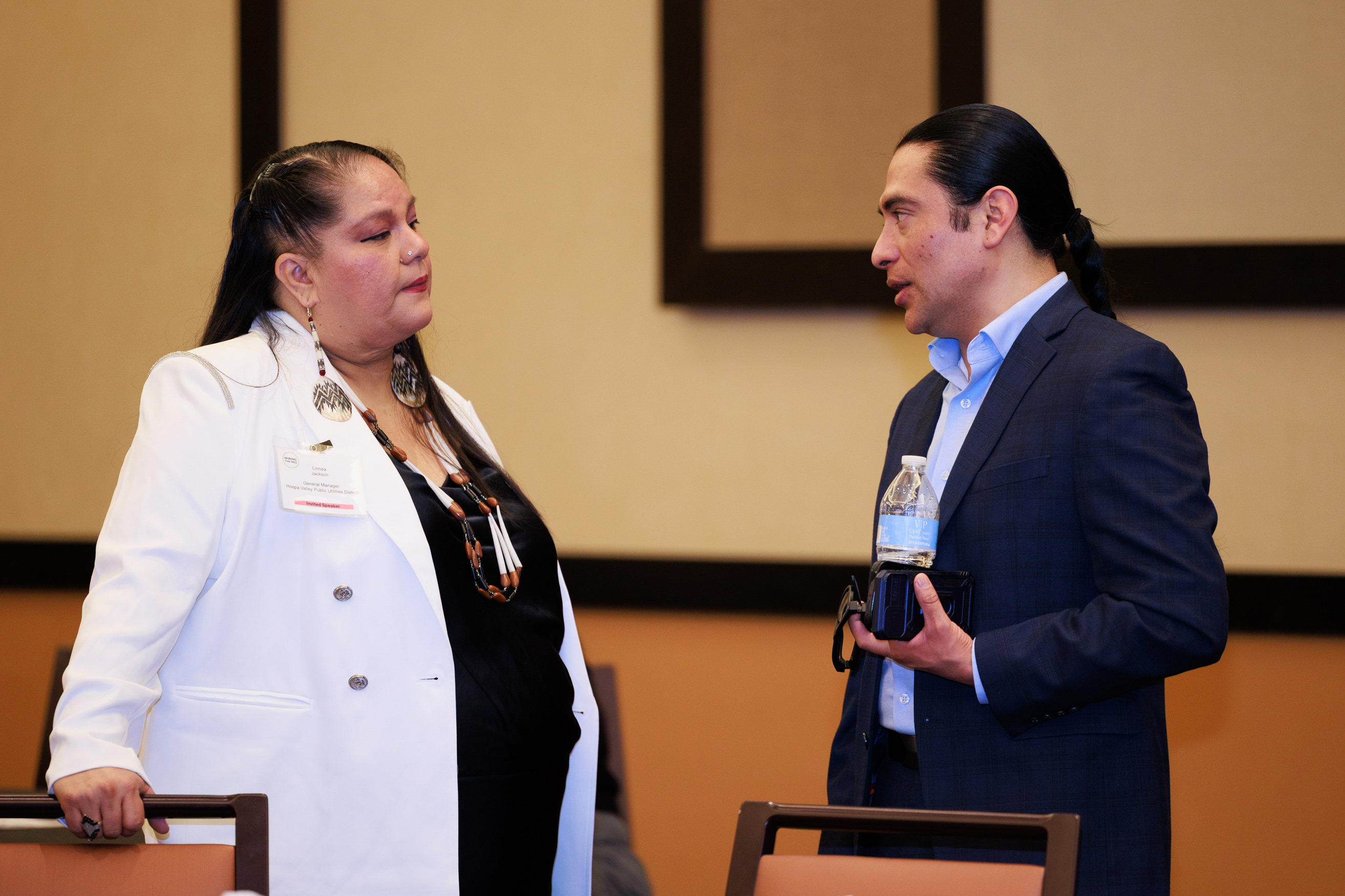
In 2024, this vision became institutionalized through the establishment of the Center for Tribal Digital Sovereignty, created through a partnership between the American Indian Policy Institute in the Sandra Day O’Connor Law School at ASU and the National Congress of American Indians. As Dr. Morris explained, “We’re the first and the only center in the nation dedicated to assisting Tribal governments, leaderships, and communities in understanding the complexities of digital sovereignty and applications to that and providing resources and support, in addition to the research.”
The Center for Tribal Digital Sovereignty operates on four key pillars: developing scholarship and research; establishing a resource hub that provides knowledge and tools on digital sovereignty; maintaining a Tribal Digital Sovereignty Coalition that provides a platform for experts and organizations to collaborate and offer Tribal nations resources, advocacy, and guidance on developing their own plans for digital self-determination; and building capacity through technology and leadership trainings. All these elements are designed to drive sustainability and create what Dr. Morris described as “an ecosystem of offerings that serve Indian country.”
“We’re the first and the only center in the nation dedicated to assisting Tribal governments, leaderships, and communities in understanding the complexities of digital sovereignty and applications to that and providing resources and support, in addition to the research.”
– Dr. Traci L. Morris
One of the Center’s priority initiatives is developing a data dashboard to serve as a user-friendly way to navigate research on digital sovereignty issues affecting Tribal communities. Its emphasis on community engagement reflects Tribal values and decision-making processes. “Tribes think collectively, for the community good first,” Dr. Morris noted, which yields results: The Cherokee Nation has incorporated this community engagement approach through its Data Sovereignty Policy and an AI Governance policy, as well as created a community task force to guide them on this process. Mari Hulbutta, director of data stewardship for the Chickasaw Nation, also leads efforts to practice Tribal data governance and assert the Nation’s data sovereignty. Yet still, there are more than 570 federally recognized Native American tribes with their own laws and codes. Achieving digital sovereignty for all of them will require standardization—and a concerted, sustained effort from funders and advocates.
Wiring the Rez: Solutions in Action
The determination to secure equal broadband was palpable at Wiring the Rez: Building Tribal Economies Through Digital Sovereignty, an annual conference held in February 2025 in Chandler, Arizona. Organized by Arizona State University’s Indian Legal Program, in partnership with the Center for Tribal Digital Sovereignty, it brought together 227 participants from 44 Tribal nations and 22 representatives of Tribal councils around the country to learn and strategize about digital access and authority within their communities. For the first time in the conference’s 10-year history, Tribal digital sovereignty was given significant attention at this gathering. As Geoffrey Blackwell, general counsel and chief of staff of the National Congress of American Indians, noted, “The fact that the entire second day of the Wiring the Rez Conference will be all about Tribal digital sovereignty places a vital issue at the forefront of the national conversation. It is a meaningful expansion of the legacy of this important gathering.”
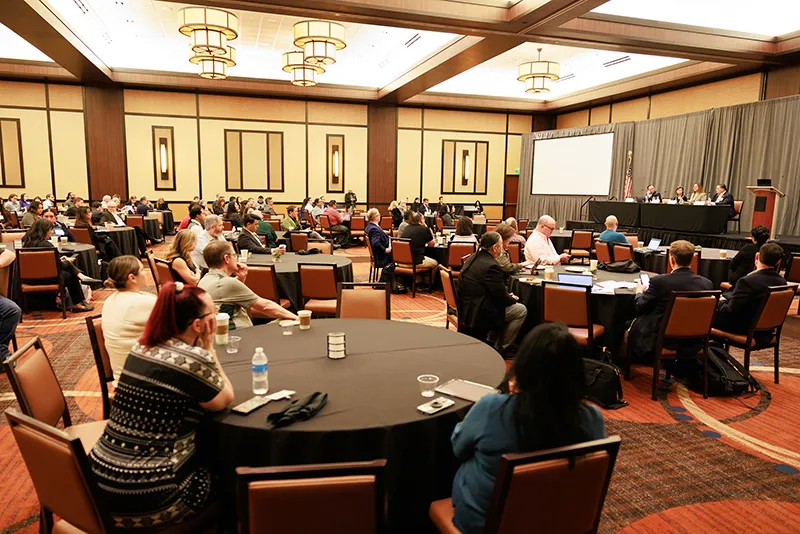

This year’s Wiring the Rez was informed by a 2019 study conducted by the AIPI, which recommended the creation of a conference focused on technology and telecommunications issues, trainings, and policy issues that affect Tribal leaders and communities, technical experts, policy advocates, philanthropies, and other stakeholders. When planning began for the 2025 conference, Dr. Morris approached the Indian Legal Program with a proposal to expand the conference, with backing from Ford and other funders.
Dr. Morris reflected that when she spoke at Wiring the Rez, there was a full room of people who knew exactly what the Center was and the issues we were taking on—“a stark contrast from a year earlier, when audiences looked at me like I was from Mars,” she said. The timing was right for a center like this to coalesce thinking, and now it has a life of its own.
When I attended Wiring the Rez, the discussions were both grounded and cutting-edge. The reception was especially positive at a session devoted to how artificial intelligence can aid the preservation and legal protection of First Languages, led by Michael Running Wolf and Dr. Morris.
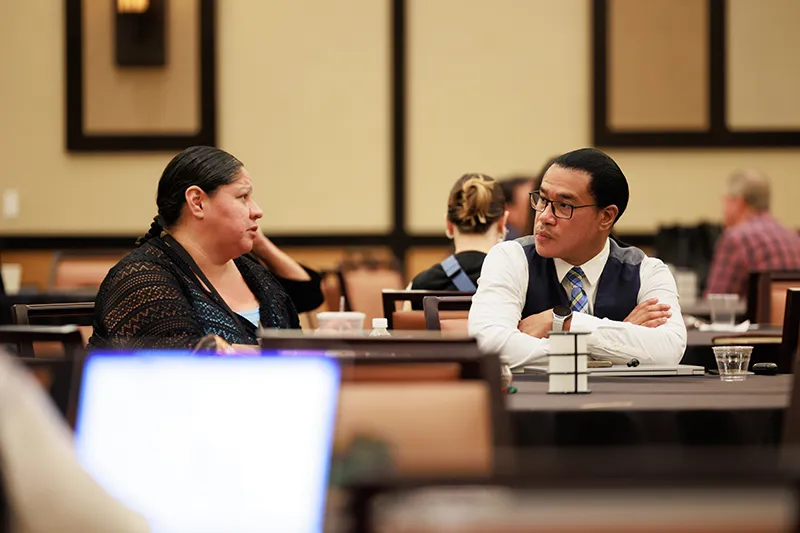

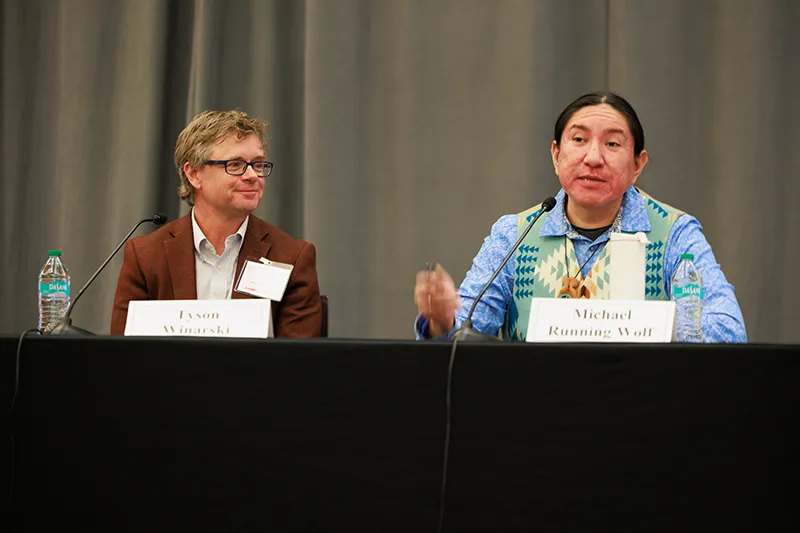
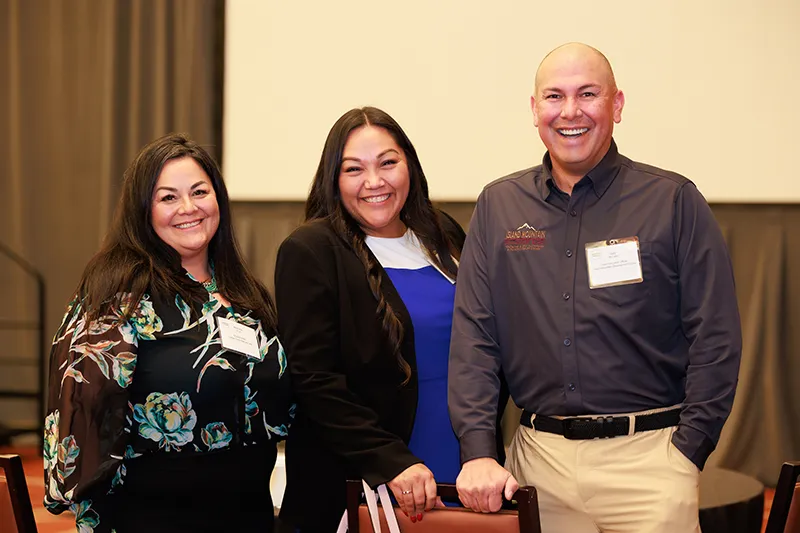
“Our conference was the first of its kind to talk about AI in Indian country: Who’s using it? How are they using it? Who’s supporting that?” said Dr. Morris. “What’s the governance like? What are our codes? What are our processes? What is the body of policy we need to build for that space?” That session was so successful, it led to a dedicated pre-conference on “Artificial Intelligence in Indian Country” in September, demonstrating the appetite for practical, community-driven approaches to emerging technologies.
That day at Wiring the Rez was years in the making and only scratches the surface of what can be achieved when there are resources to support bold, community-driven solutions.
The Role of Philanthropy: Supporting Community-Led Solutions
Wiring the Rez and the Center for Tribal Digital Sovereignty offer a model for how communities can assert agency and self-determination in an increasingly digital world—and they demonstrate what is possible when philanthropy partners with Tribal community experts who understand these challenges firsthand.
Dr. Morris knows that this work is about the present and the future, and sustaining and expanding this work requires continued investment in both resources and relationships. “I am a Native American Gen X, and I’m the first generation,” she said. “Not only is Gen X small, we’re also the first generation to get advanced degrees that are Native American, so that’s even tinier. I’ve got to get those next generations interested in doing this work so that we do have that continued response.”
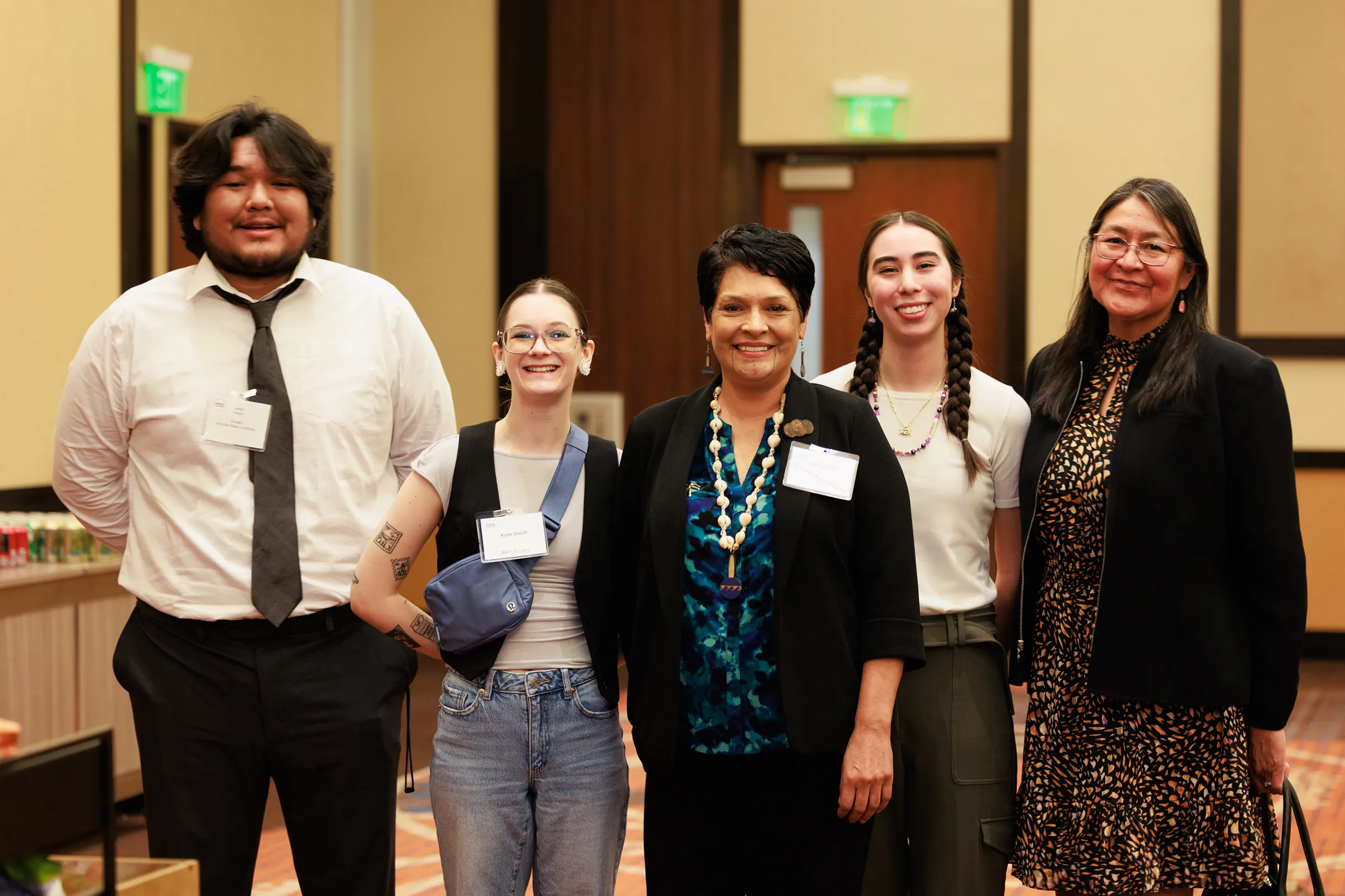
As we all face an uncertain technological future, we need more imagination when it comes to the role technology can play in our lives, and more sustained support for the leaders centering justice in their advocacy. The Center for Tribal Digital Sovereignty and the communities it serves are providing exactly this—demonstrating that another way is possible, one that honors sovereignty, builds on community knowledge, and advances technological solutions that truly serve human flourishing.
Their work reminds us that tech justice isn’t just about access to faster internet—it’s about who gets to shape the digital future and on what terms. With the help of the Center for Tribal Digital Sovereignty, native communities across the country are building a better tomorrow—one connection, one conversation, and one act of self-determination at a time.